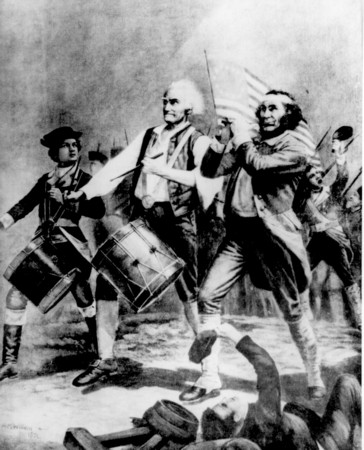Although the Freedom Trail acts as an historical guide through Revolutionary Boston, it also attempts to tell a particular story. By looking at the 16 sites that are part of the Freedom Trail, as well as the sites which have been omitted, this story becomes much clearer.
It is a rather one-dimensional story of freedom and independence, primarily for the white, Protestant, anti-British male. Left out of this story are the loyalists (those who stayed loyal to the British Crown during the Revolution), women, and minorities, as their stories have been largely left untold by the Freedom Trail. But this does not mean that there are no sites in very close proximity to the Freedom Trail that do tell their stories, because there are some.
The first is the Black Heritage Trail, which is very fitting because by 1800 Boston had one of the largest free African-American populations in North America. Like the Freedom Trail, the Black Heritage Trail begins at Boston Common, specifically at the Robert Gould Shaw and 54th Regiment Memorial. It winds its way through the Beacon Hill district until it finally concludes at the African Meeting House, which is the oldest black church edifice still standing in the United States and was often called the Black Faneuil Hall. The trail includes one of the city's first black schools (the Abiel Smith School), one of the first schools with an interracial student body (the Phillips School), the first integrated church in America (the Charles Street Meeting House), and the houses of important African-American community members. It very well represents the African-American community during the Revolution and shortly after and provides an important alternative to the one-dimensional story of the Freedom Trail.
There is similarly a Women's Heritage Trail that "celebrates four centuries of women's contributions." It includes 9 various walking trails through the city (one each at the Back Bay, Beacon Hill, Downtown, Jamaica Plain, Chinatown, Charlestown, Roxbury, the South End, and West Roxbury) that are pretty much intertwined. There is a plethora of sites to visit in each of these trails, including the nation's very first YWCA (Young Women's Christian Association), the homes of Julia Ward Howe and Louisa May Alcott, and sculptures of Mary Dyer and Anne Hutchinson. Rather than focusing on collective action taken by women, it delves into individual histories of the most important and interesting women figures in Boston's history. By doing so, it also provides a nice alternative to the Freedom Trail.
Although immigration to Boston did not reach its peak until the early to mid-1800's, immigrants did make the journey to the New World prior to the Revolution. But their stories and histories, much like their African-American and women counterparts, were relatively ignored until 1998, when the Boston Irish Famine Memorial was unveiled near the Old South Meeting House to commemorate the 150th anniversary of the Irish Famine. The 1848 famine led to the largest influx of Irish immigrants in the city's history. Although the memorial is primarily in remembrance of the Irish (and a reflection of the enormous Irish population currently in Boston), it also signified the universality of the immigrant experience. While extremely important to the city's growth, the immigrant experience did not fit in with the story the Freedom Trail was attempting to tell. The majority of the sites focused on events that occurred during the 17th and 18th centuries, with a couple from the early 19th century, so the massive immigration of the mid-1800's was too late for the story.
Another memorial with great significance is the New England Holocaust Memorial, near Faneuil Hall in Downtown Boston. Dedicated in 1995, the memorial is in honor of one of the world's most gruesome acts of genocide, the Holocaust. It features 6 glass towers (each 54 feet tall), which represent the six main Nazi death camps and the six million Jews who were killed. Although it is along the Freedom Trail path, it is technically not associated with the trail because it, much like the Irish Famine Memorial, does not fit with the story of Revolutionary Boston. Although it should not be a part of the Freedom Trail for this reason, it is clearly a vital memorial and one that should be erected in more cities.
The final site that has been omitted from the Freedom Trail is the Boston Tea Party Ship and Museum. The tourist attraction is privately run by the Historic Tours of America and contains a replica of the original Tea Party ship, the brig Beaver II. The only reason I can think of that it is not on the Freedom Trail is its location, roughly ½ mile away from the closest site along the trail. It is the exact event which the Freedom Trail proudly celebrates - a nation sticking up for its beliefs and acting against a tyrannical foreign power.
All of these sites are critically important to Boston's history. But for one reason or another, they did not find their way onto the historic Freedom Trail. This does not mean the city does not want to celebrate the role of immigration, women, or African-Americans. It merely means they did not fit into the rather one-dimensional story of Revolutionary Boston that the trail tells.
